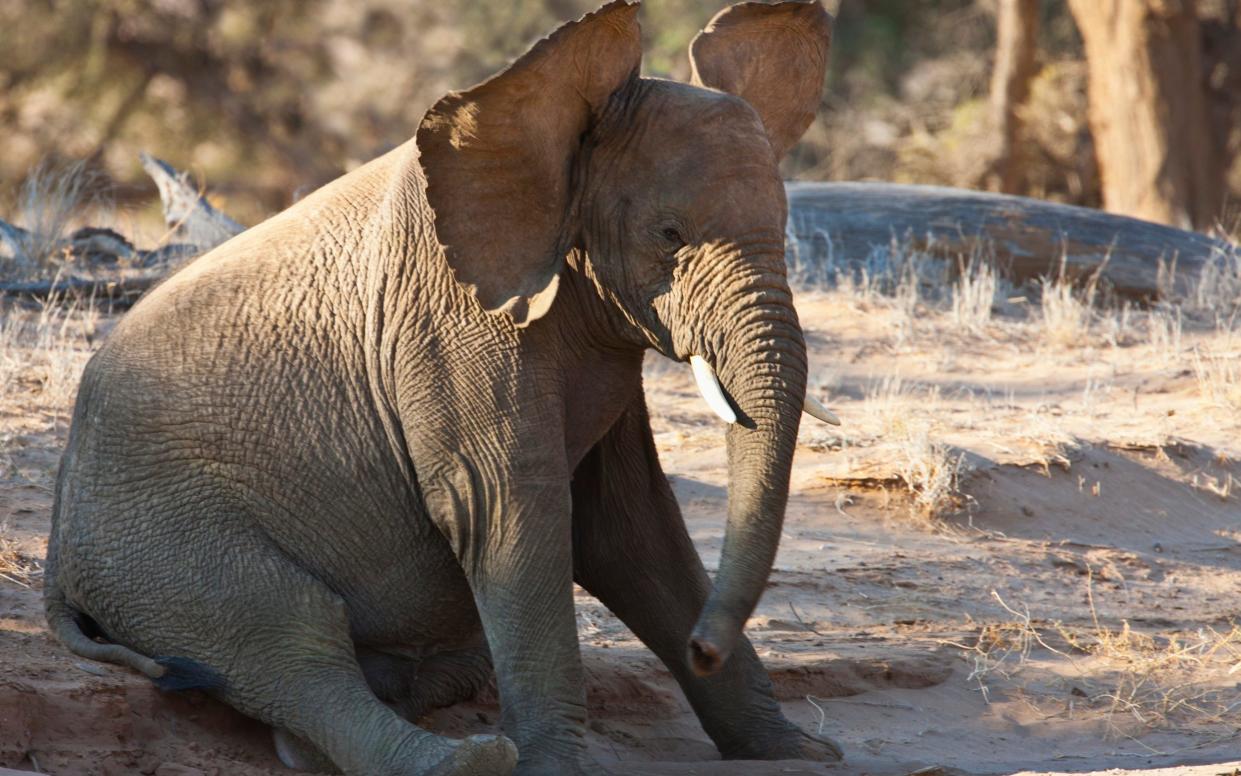Discover how elephants greet their friends

Elephants flap their ears, wag their tails and trumpet to greet their companions, a study has found.
The largest living land mammals also rumble, roar and reach out their trunks when reunited with friends, according to the research.
The study published in Communications Biology found that African elephants use different combinations of gestures that may promote individual recognition and social bonding.
Previous research has reported that elephants often engage in greeting rituals involving vocalisations and physical actions.
However, it has been unclear whether these physical actions are deliberate forms of communication, and how actions and noise are combined during greetings.
The study, led by Vesta Eleuteri and Angela Stoeger, of Vienna University, looked at noises and physical actions used during elephant greetings.
Endangered in the wild
Nine African elephants, which are endangered in the wild, were observed while semi-captive on savannah in the Jafuta Reserve, Zimbabwe, between November and December 2021.
During that time, the authors observed 89 greetings consisting of 1,282 different behaviours, of which 1,014 were physical actions and 268 were vocalisations.
The authors found that the elephants, which can weigh up to seven ton, greeted each other with specific combinations of sounds and gestures, such as rumbles with ear flapping or ear spreading.
These were combined with seemingly less deliberate physical movements, such as tail raising and waggling.
The combination of rumbling and ear flapping was the most common form of greeting, although this was more frequently used between females than between males.
Researchers also found that urination, defecation and secretions from a sweat gland unique to elephants were present in 71 per cent of greetings, suggesting that smell may play an important role as well.
Visual gestures
The study found that the methods of communication used by elephants during greetings varied depending on whether the other animal was looking at them.
The elephants, which can be up to 13ft tall, were more likely to use visual gestures – such as ear spreading, trunk reaching or trunk swinging – when they were being watched.
However they were more likely to use behaviours that produce a sound, such as ear-flapping and slapping their ears on their neck, or to touch the recipient of their greeting with their trunk, when not being watched.
The scientists said that the findings suggest that elephants greet each other by combining noises and gestures together. They may deliberately alter their communication methods depending on whether they have the visual attention of the elephant they are greeting.
Describing the findings, the authors said that there was evidence “that elephants target gestures at their audience selecting their modality appropriately according to the audience’s state of visual attention”.
“We demonstrate that elephants greet with specific vocalisations and gestures or body acts of different modalities, which they integrate into multi-component combinations.”
“Additionally, we present evidence that individual and social factors shape the use of rumble vocalisations and ear-flapping gestures in combination.
“Our results suggest that social relationships flexibly impact the use of signals by elephants during greeting, and support the hypothesis that elaborate greeting behaviour functions to strengthen social bonds upon reunion, including among closely bonded semi-captive males.”

 Yahoo News
Yahoo News 